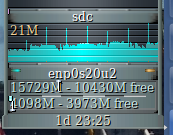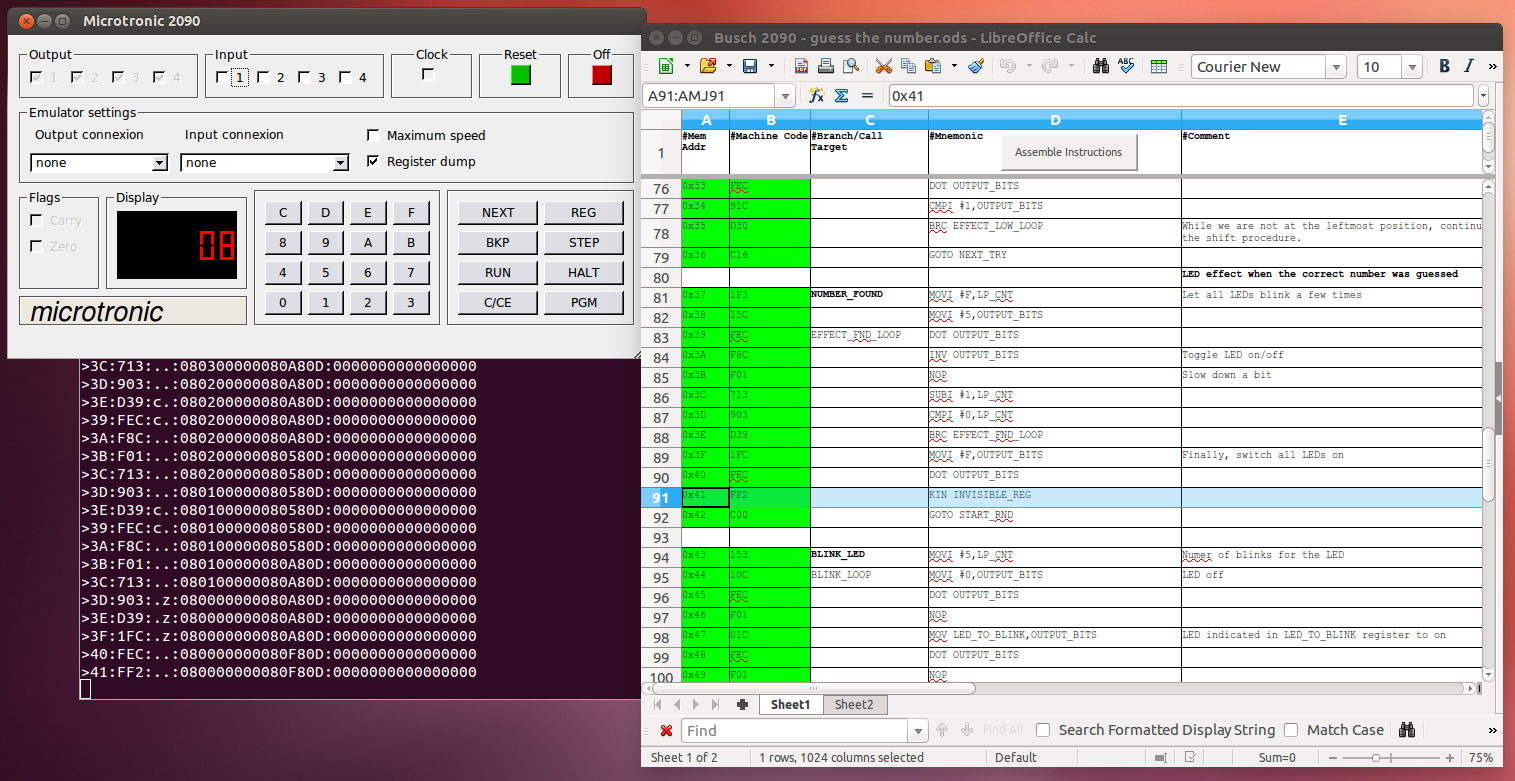Back in 2014 I was musing about that the time has come for network operators to introduce a feature to hand-over an ongoing 3G connection to LTE. For me and those who frequently tether their PC while on the move, this is an important feature when the network makes a handover of an ongoing connection from LTE to 3G. Without the feature a device is stuck in 3G unless the radio bearer is released and the mobile can reselect back to LTE autonomously. Another way back to LTE is when the connection is transferred by the network to 2G at some point as here, the mobile can take measurements on LTE bands autonomously even while a data transfer is ongoing and reselect back to LTE. Unfortunately not much has happened in in that regard since then and I continue to be stuck on 3G for a long time when using my notebook. But when I was recently traveling I observed a number of 3G to LTE ‘handovers’ while a data transfer was ongoing for the first time. And it worked a bit differently from what I expected. Continue reading 3G to LTE Handover – Another Approach
Author: Martin
‘Inception-Like’ Working Across Continents with LTE and 3G
 When I travel on business I usually have two notebooks with me as I like to keep things apart from each other. It’s a bit of a pain, especially in conferences when desk space is limited but the setup has served me well over the years. When I was recently on business travel I decided I take the chance and use a virtualized instance of one of the two computers and run it on the other.
When I travel on business I usually have two notebooks with me as I like to keep things apart from each other. It’s a bit of a pain, especially in conferences when desk space is limited but the setup has served me well over the years. When I was recently on business travel I decided I take the chance and use a virtualized instance of one of the two computers and run it on the other.
Continue reading ‘Inception-Like’ Working Across Continents with LTE and 3G
US National Weather Service Alerts Me With WEA
 This time I was a bit less surprised when I received a CMAS warning message. However instead of a test message like in the Netherlands it was a real warning message from the US National Weather Service. Perhaps this is a normal occurrence for most Americans but in Europe only the Netherlands is using a cellular network public warning system so it’s still worth to blog about it for me.
This time I was a bit less surprised when I received a CMAS warning message. However instead of a test message like in the Netherlands it was a real warning message from the US National Weather Service. Perhaps this is a normal occurrence for most Americans but in Europe only the Netherlands is using a cellular network public warning system so it’s still worth to blog about it for me.
I also noticed that stock Android has adopted a lot of configuration options to enable users to select which kind of warning messages they want to receive. The second screenshot on the left shows the options as implemented in Android 7. In LTE, CMAS or WEA (Wireless Emergency Alerts) as the system is now referred to is implemented by broadcasting System Information (SIB)-12 messages. For further technical details have a look at my post on the topic from last year.
Continue reading US National Weather Service Alerts Me With WEA
Intercontinental Flatrate
 I’m a frequent international traveler, so easy and affordable voice and data connectivity not only at home but also when traveling are obviously very important to me. Recently, things have once again significantly improved as the the US and Canada are now also included in my German mobile subscription.
I’m a frequent international traveler, so easy and affordable voice and data connectivity not only at home but also when traveling are obviously very important to me. Recently, things have once again significantly improved as the the US and Canada are now also included in my German mobile subscription.
Book Review – A Terrible Nerd
From the number of book reviews it must seem that I do quite a bit of reading these days. However, it’s not more than usual, I just have some catch-up to do. Back in 2015 I had a post on “Diary of an 80s computer geek“, a book not about events that shaped computing history but rather a personal story of how computers in the 1980s had on the author. “A Terrible Nerd” by Kevin Savetz is another book in that rare genre, written from the perspective of a teenager and young adult in the 1980s in Southern California. Again there are many stories he tells I can immediately relate to as I had similar experiences back in those days. Like me, Kevin seems to have found interest in computer archeology and he’s quite active in the Atari domain preserving documents and hardware. A great book if you want to step back for a little while from stories about how particular computers, persons and inventions have shaped the industry and just want to dive into personal computing experiences from the 80s.
Sustained 170 MBit/s over LTE-A in Cologne
 I haven’t had a lot of speed test reports over the past few years on this blog because frankly, whenever I have LTE coverage these days, sustained data rates are usually well beyond 10 Mbit/s and thus usable for most things I require Internet access for. In other words, I’ve stopped bothering. Besides that, a little problem these days when doing high data rate speed tests is that they eat through my monthly data volume really quickly, especially when doing large file downloads to see the sustained data rates. Fortunately my network operator now has a 24h option for unthrottled and unlimited data transfers for a few euros. So when I had to use the option a couple of days ago I decided to run a speed test in the evening at round 8 p.m. at my home in the center of Cologne to see what the network delivers during peak time to a single user.
I haven’t had a lot of speed test reports over the past few years on this blog because frankly, whenever I have LTE coverage these days, sustained data rates are usually well beyond 10 Mbit/s and thus usable for most things I require Internet access for. In other words, I’ve stopped bothering. Besides that, a little problem these days when doing high data rate speed tests is that they eat through my monthly data volume really quickly, especially when doing large file downloads to see the sustained data rates. Fortunately my network operator now has a 24h option for unthrottled and unlimited data transfers for a few euros. So when I had to use the option a couple of days ago I decided to run a speed test in the evening at round 8 p.m. at my home in the center of Cologne to see what the network delivers during peak time to a single user.
Humble Bundle – IT Security Books
A quick tip today for those interested in extending their knowledge about IT Security: Humble bundle currently has a fine assortment of IT security related books on sale. I haven’t read any of these books yet but according to Fefe (in German), ‘Practical Reverse Engineering’ by Bruce Dang and friends is one of the standard works of the genre and already included in the $1 bundle. Fefe also speaks very highly of other books that are part of the slightly higher priced bundles ($8 and $15) such as, according to him, the legendary ‘Security Engineering’ and the ‘Shellcoder’s handbook’. Also recommended and first on my list to read is the ‘Web Applications Hacker’s Handbook 2nd edition’. All books are DRM free (otherwise I would not have bothered) and available in different formats such as ePUB and PDF. The books are of course several years old but the usefulness of ‘standard works’ is a bit longer than the usual 12-24 months so I’m very much looking forward to diving into many of them.
Reviving a Busch 2090 Emulator
 The Busch 2090 learning computer of 1981 may be a niche thing in a niche thing but over the years it every now and then sparks the interest afresh in some of those who wanted to have or actually owned this 4-bit computer back then as a teenager. 12 years ago must have been such a time for Ingo Rullusen when he decided to program a Busch 2090 emulator for the PC. Fortunately, he put the code under the GPL and put it online. Unfortunately, 12 years is enough to make it difficult to get it working again on current operating systems.
The Busch 2090 learning computer of 1981 may be a niche thing in a niche thing but over the years it every now and then sparks the interest afresh in some of those who wanted to have or actually owned this 4-bit computer back then as a teenager. 12 years ago must have been such a time for Ingo Rullusen when he decided to program a Busch 2090 emulator for the PC. Fortunately, he put the code under the GPL and put it online. Unfortunately, 12 years is enough to make it difficult to get it working again on current operating systems.
Cellular IoT – Network Friendly Devices and GSMA TS.34
Local network technologies like WLAN have a distributed coordination function, i.e. every device decides for itself when it wants to transmit on a common channel and have backoff and repetition features with random and increasing delays to get out of situations when more than one device transmits at the same time. Another helpful thing in local networks is that there are usually just a limited number of devices so distributing control instead of having a centralized controller usually works well. In cellular networks, things are quite a bit different and sometimes mobile devices don’t act very friendly when their communication request is rejected and start bombarding the network with connection requests that are promptly rejected again if the reason for rejecting them persists. Especially in the world of IoT, unfriendly devices can become a problem quite quickly. Time to do something about that…
Continue reading Cellular IoT – Network Friendly Devices and GSMA TS.34
Book Review – When Computing Got Personal
 Another book I recently read about the history of computing is “When Computing Got Personal” by Matt Nicholson. It took me quite a bit to get around to this one because its approach is more holistic than the books I have read before about specific events of companies. Also it’s not as ‘Valley’ centric than the others so perhaps it has a bit less appeal to get picked up. Not so its content, however.
Another book I recently read about the history of computing is “When Computing Got Personal” by Matt Nicholson. It took me quite a bit to get around to this one because its approach is more holistic than the books I have read before about specific events of companies. Also it’s not as ‘Valley’ centric than the others so perhaps it has a bit less appeal to get picked up. Not so its content, however.